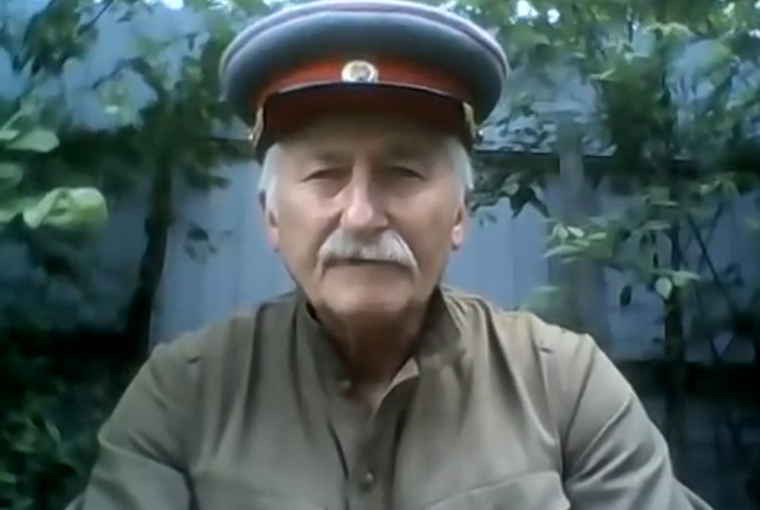
Grievances are best addressed to those who can alleviate them. If any person we trust can answer our need to be heard and understood, only those who promise us an escape route can turn anger into hope. Because persons in such situations of power are often the ones who have caused our plight in the first place, they also tend to be the ones we feel must know in every detail what it is like to be in our situation. It might thus not surprise us that Vladimir Putin, who is generally assumed to be running Russia singlehandedly, is the chief addressee of a whole genre of YouTube videos documenting the desolate life situation many Russian citizens find themselves in. Whether the issue relates to corruption, health care, ecology, or plain poverty, “Volodya” – as some tend to call him (for the most part scathingly) – is whom citizens’ self-documented frustration is overwhelmingly directed towards. Andrey Gryazev, who has assembled a large corpus of this type of YouTube videos and turned them into a 71-minute film entitled “The Foundation Pit”, has pointed out that many of these videos follow a three-act-structure. Though singular films open on a silent note, the first act is usually highly emotional and names the grievance that is then elaborated in the middle part, before the whole film returns to the passionate tone of the beginning, culminating in a flurry of accusation.
The title of Gryazev’s film is a nod to the eponymous 1930 novel by Andrei Platonov, which recounts citizens’ growing alienation with state policies during Joseph Stalin’s early reign. Though the title-lending metaphor of Platonov’s novel is a perfect match for this film, Gryazev exploits it in the most obvious of ways, literally drawing a parallel between the state and buildings erected on a shaky foundation by opening his film with media coverage of a number of foundation pits collapsing or swallowing up passers-by. Not only does this graphic and half-voyeuristic indulgence in the symbolic force of architecture push to the side more nuanced hermeneutic approaches to Platonov, it also seems oddly out of touch with the rest of the film, which is dedicated not to localist media coverage, but to a very specific channel of communication between Russian citizens and Putin. Why could Gryazev not open the film with the video genre his film is exclusively preoccupied with? Why did the need to accommodate a metaphor override any concern for stylistic integrity? – Typically for modern-day festival films, the need to subsume a film under an idea that is pitched to sales agents and festivals, is acknowledged and pursued completely separately from the question whether the final product even corresponds with this idea.
To be fair, Gryazev’s film is fairly gripping regardless, a feat Gryazev, who edited the film himself, must surely be personally credited with. All of the YouTube addresses to Putin that Gryazev has chosen are meaningful because they are either an expression of genuine despair and anger, or analytically insightful, or simply creative and funny. Some of the videos that ended up in the final edit are all of these things at once. When a young man shrugs that he does not know what to do with the money he has earned, because no matter how he goes about spending, whichever he prioritizes and cuts costs and no matter what he buys first, he will end up with less money than he needs to survive, the message is utterly devastating in its straightforwardness. Such non-ideological, sober accounts – which are flanked by many an insulting one – rang truest with me, because there is no way of arguing with them, no cynical way to retort that perhaps this person is driven by politics, or emotion, or whatnot. No, here is a person not interested in indoctrinating people, who is perhaps even not asking for sympathy, but someone who speaks because he genuinely does not appear to know what to do next: if he fills up the tank of his car, he won’t be able to do his groceries; if does his groceries, he won’t be able to fill up his tank.
At the Berlinale, where the film screened in the Panorama section, The Foundation Pit will likely bolster Russia’s reputation as a retrograde and undemocratic country, and it is true that the film partly stands as a sign for all the things that are wrong with the way Russia is run, for all the ways in which citizens are missing the money the Moscow kleptocracy has ruthlessly been amassing. On the other hand, it is less obvious to me that Putin’s presence in the addresses is but a sign of Russia’s authoritarian culture stretching back at least to Stalin’s cult of personality, the YouTube video addresses being no more than a sort of modern analogy to the personal letters Stalin received from Soviet citizens. The fact that, facing intimidation and repression, people so much as articulate their social and political grievances in modern-day Russia, suggests to me that there the idea of the state as a guarantor of social rights is one that has still survived, if only as an idea. It is precisely at the Berlinale, where a whole infrastructure of films by Western European citizens returning to the countries of their parents and grandparents is showcased, that we should ask why it is so easy for us to point out problems in Russia and Eastern Europe more generally, and so difficult to portray these issues here and now. Poverty, ecological problems and corruption are prevalent in Russia, but these problems raised by the YouTubers from Gryazev’s film are ones that likewise endanger large portions of our society in Germany, France and the United Kingdom. Yet, the local infrastructure of YouTube videos addressing heads of state is dominated, in Germany at least, by racist agitators accusing globalists of a plot against the “white race”. Is that a sign of our democracy, or a sign that the only ordinary citizens who still articulate grievances vis-à-vis our leaders in Western countries are stupid white men?




Leave a Comment